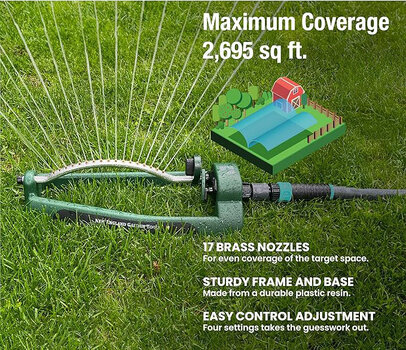Hi all,
A couple of weeks ago now I spent a week fishing and drinking, er I mean driving, around Fraser Island, the worlds largest sand island. About 150km bottom to top, no bitumen anywhere, just beach and generally soft inland sand tracks. God’s country.
I’ve been doing this every year for about 25 years, mainly in either a V8 petrol 100 series Landcruiser, or V8 TT diesel 200 Series landcruiser - what I consider (and still do) to be the best sand 4wd around. You just can’t beat that big lazy V8 diesel for getting around in the soft stuff.
So I thought for what it’s worth I’d give a summary of how I thought it went and how it is different to the cruisers.
First things first - it did it easy, zero problems and never any doubts.
I was a little anxious on this trip. 9 blokes on the trip, every one of them ready to tear you to pieces if you stuff up the driving, and this year 2 Ineos and an Amarock. Non drivers who usually drive (we rotate each year) both own Y62 5.6L petrol Patrols (298kw of sand eating grunt), and being the sole Toyota representative every year (for 20+ years) I had a big rep to protect. The other Ineos owner is a relative novice to sand driving so the boys were just waiting for him to bog it. Suffice to say - it didn’t happen, and he towed a 5’x7’ box trailer around the island for most of the trip.
So the Ineos rep untarnished, and the doubters have been suitably impressed, although not ready to buy one (with a definite passion for beige).
So my thoughts.
The grenadier did it easy wherever we pointed it. I pretty much locked the centre diff as soon as I got on the sand. Not that I probably needed to, and rarely did need to in the landcruiser, but because I didn’t want to get caught short not knowing how it would go on the sand. Along the beach and across the soft bypass tracks, centre lock drive was all it ever needed and I was never thinking I’d need to do anything different. As the week progressed I got more and more confident in the way it did it easy and by mid week I knew it was bullet proof.
So how did it drive differently to the landcruiser?
Well I have to say at speed (60-80km/hr) along the beach at higher tides where the sand was soft it doesn’t track as well as the cruisers do. It would tend to drift off line a bit and didn’t follow the tracks already made in the sand as well as a cruiser and would wander off if I wasn’t careful. Nothing approaching a problem, but you needed to watch it more than I am used to.
Ronny Dahl has mentioned before that it tends to react slowly, like a boat, when you’re at a bit of speed and turning quickly in and out of tracks, and I found it the same. A number of times I would oversteer and find I’d turned too tightly because the steering didn’t react as quickly as I thought it would. Punching through Ngkala Rocks where it’s super soft for a good 500m or so with a lot of turns where you need to keep momentum up I’d oversteered a bit thinking it wasn’t going where I wanted to, only to find it was getting there, just with a bit of a delay. I got better at picking it as the week progressed.
A number of times I had to quickly pull up in really soft sand when I’d turned a corner and found someone else bogged on the track. Never once was I concerned I’d bogged myself having to pull up in a hurry. Just in reverse, easy on the pedal and back out to where I needed to go.
The major difference though is how the gearbox works when powering through the soft stuff.
Crossing Ngkala Rocks in the V8 cruisers I would rarely need to put it in manual mode and drive in a selected gear unless ot was powder dry - the box just did what it had to do and plow through to get you to the end.
The grenny does it very differently however. The first time I crossed it, I just left it in drive and it would rev itself up in second up to high revs and then just drop into third and slug along and then drop back to second and rev up until it dropped again. Never looked like getting stuck, but a bit concerning and if the sand was softer a shift up into third might have been a bit of a worry. Doing that first crossing I was just concentrating on getting across without being the first to bog it, so didn’t do anything about the gears.
On the trip back after the first run though, I put it in manual third and shifted back and forth between second and third when I needed to and it was a whole different vehicle. Just ate it up. Subsequent crossings in manual were easy.
So in very soft sand, always drive in manual mode is my recommendation. The box just isn’t as good as a cruisers at figuring it out in my view.
What else.
Only three little things.
The passenger side door button now sticks occasionally because of the salt and sand.
I had a knock in the steering column in the same place at rotation that I only noticed when I was back on the black top - it was constantly doing it when I got home but that’s settled down a bit and only occasionally now. Will get that looked at in a 1000km time at first service.
And the plastic grill that “protects” the bottom of the radiator I found broken off and sitting below where it normally sits when I washed it the weekend after I got home. Must have not been able to handle the pressure on one of the many freshwater crossings you encounter on the island. Very flimsy stuff really.
And I’d expected the rear guard that covers the exhaust to be a sand collector/anchor. But after using the under body wash on the trip home the underbody is surprisingly sand free, much less that what would have been left on the cruiser. I am a bit worried about what might be hiding behind all that silver protection/deadening everywhere under the grenny, so might get under there with a spanner and remove a bit to see what that might be hiding.
Oh, and the guy from Ineos that developed the internal plastic linings, particularly in the rear, needs sacking if he still has a job. You’ve only got to lean something against it for it to scratch, and if anything rests on it during a full run up the beach the plastic is stuffed. I want a free set of plastic trims under warranty to put on it when I sell it in 20-30 years time.
All in all, very very happy with its first proper test as a 4wd, very confident now it will go anywhere I point it, and grinning from ear to ear when I jump in.
If you’ve lasted this long, sorry for the huge post, and I hope others who take it on the sand use this thread to post their thoughts.
Cheers.
BL
A couple of weeks ago now I spent a week fishing and drinking, er I mean driving, around Fraser Island, the worlds largest sand island. About 150km bottom to top, no bitumen anywhere, just beach and generally soft inland sand tracks. God’s country.
I’ve been doing this every year for about 25 years, mainly in either a V8 petrol 100 series Landcruiser, or V8 TT diesel 200 Series landcruiser - what I consider (and still do) to be the best sand 4wd around. You just can’t beat that big lazy V8 diesel for getting around in the soft stuff.
So I thought for what it’s worth I’d give a summary of how I thought it went and how it is different to the cruisers.
First things first - it did it easy, zero problems and never any doubts.
I was a little anxious on this trip. 9 blokes on the trip, every one of them ready to tear you to pieces if you stuff up the driving, and this year 2 Ineos and an Amarock. Non drivers who usually drive (we rotate each year) both own Y62 5.6L petrol Patrols (298kw of sand eating grunt), and being the sole Toyota representative every year (for 20+ years) I had a big rep to protect. The other Ineos owner is a relative novice to sand driving so the boys were just waiting for him to bog it. Suffice to say - it didn’t happen, and he towed a 5’x7’ box trailer around the island for most of the trip.
So the Ineos rep untarnished, and the doubters have been suitably impressed, although not ready to buy one (with a definite passion for beige).
So my thoughts.
The grenadier did it easy wherever we pointed it. I pretty much locked the centre diff as soon as I got on the sand. Not that I probably needed to, and rarely did need to in the landcruiser, but because I didn’t want to get caught short not knowing how it would go on the sand. Along the beach and across the soft bypass tracks, centre lock drive was all it ever needed and I was never thinking I’d need to do anything different. As the week progressed I got more and more confident in the way it did it easy and by mid week I knew it was bullet proof.
So how did it drive differently to the landcruiser?
Well I have to say at speed (60-80km/hr) along the beach at higher tides where the sand was soft it doesn’t track as well as the cruisers do. It would tend to drift off line a bit and didn’t follow the tracks already made in the sand as well as a cruiser and would wander off if I wasn’t careful. Nothing approaching a problem, but you needed to watch it more than I am used to.
Ronny Dahl has mentioned before that it tends to react slowly, like a boat, when you’re at a bit of speed and turning quickly in and out of tracks, and I found it the same. A number of times I would oversteer and find I’d turned too tightly because the steering didn’t react as quickly as I thought it would. Punching through Ngkala Rocks where it’s super soft for a good 500m or so with a lot of turns where you need to keep momentum up I’d oversteered a bit thinking it wasn’t going where I wanted to, only to find it was getting there, just with a bit of a delay. I got better at picking it as the week progressed.
A number of times I had to quickly pull up in really soft sand when I’d turned a corner and found someone else bogged on the track. Never once was I concerned I’d bogged myself having to pull up in a hurry. Just in reverse, easy on the pedal and back out to where I needed to go.
The major difference though is how the gearbox works when powering through the soft stuff.
Crossing Ngkala Rocks in the V8 cruisers I would rarely need to put it in manual mode and drive in a selected gear unless ot was powder dry - the box just did what it had to do and plow through to get you to the end.
The grenny does it very differently however. The first time I crossed it, I just left it in drive and it would rev itself up in second up to high revs and then just drop into third and slug along and then drop back to second and rev up until it dropped again. Never looked like getting stuck, but a bit concerning and if the sand was softer a shift up into third might have been a bit of a worry. Doing that first crossing I was just concentrating on getting across without being the first to bog it, so didn’t do anything about the gears.
On the trip back after the first run though, I put it in manual third and shifted back and forth between second and third when I needed to and it was a whole different vehicle. Just ate it up. Subsequent crossings in manual were easy.
So in very soft sand, always drive in manual mode is my recommendation. The box just isn’t as good as a cruisers at figuring it out in my view.
What else.
Only three little things.
The passenger side door button now sticks occasionally because of the salt and sand.
I had a knock in the steering column in the same place at rotation that I only noticed when I was back on the black top - it was constantly doing it when I got home but that’s settled down a bit and only occasionally now. Will get that looked at in a 1000km time at first service.
And the plastic grill that “protects” the bottom of the radiator I found broken off and sitting below where it normally sits when I washed it the weekend after I got home. Must have not been able to handle the pressure on one of the many freshwater crossings you encounter on the island. Very flimsy stuff really.
And I’d expected the rear guard that covers the exhaust to be a sand collector/anchor. But after using the under body wash on the trip home the underbody is surprisingly sand free, much less that what would have been left on the cruiser. I am a bit worried about what might be hiding behind all that silver protection/deadening everywhere under the grenny, so might get under there with a spanner and remove a bit to see what that might be hiding.
Oh, and the guy from Ineos that developed the internal plastic linings, particularly in the rear, needs sacking if he still has a job. You’ve only got to lean something against it for it to scratch, and if anything rests on it during a full run up the beach the plastic is stuffed. I want a free set of plastic trims under warranty to put on it when I sell it in 20-30 years time.
All in all, very very happy with its first proper test as a 4wd, very confident now it will go anywhere I point it, and grinning from ear to ear when I jump in.
If you’ve lasted this long, sorry for the huge post, and I hope others who take it on the sand use this thread to post their thoughts.
Cheers.
BL
Last edited:




